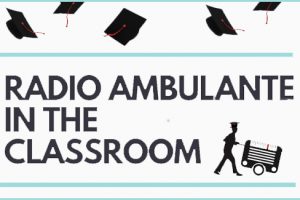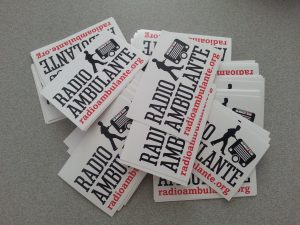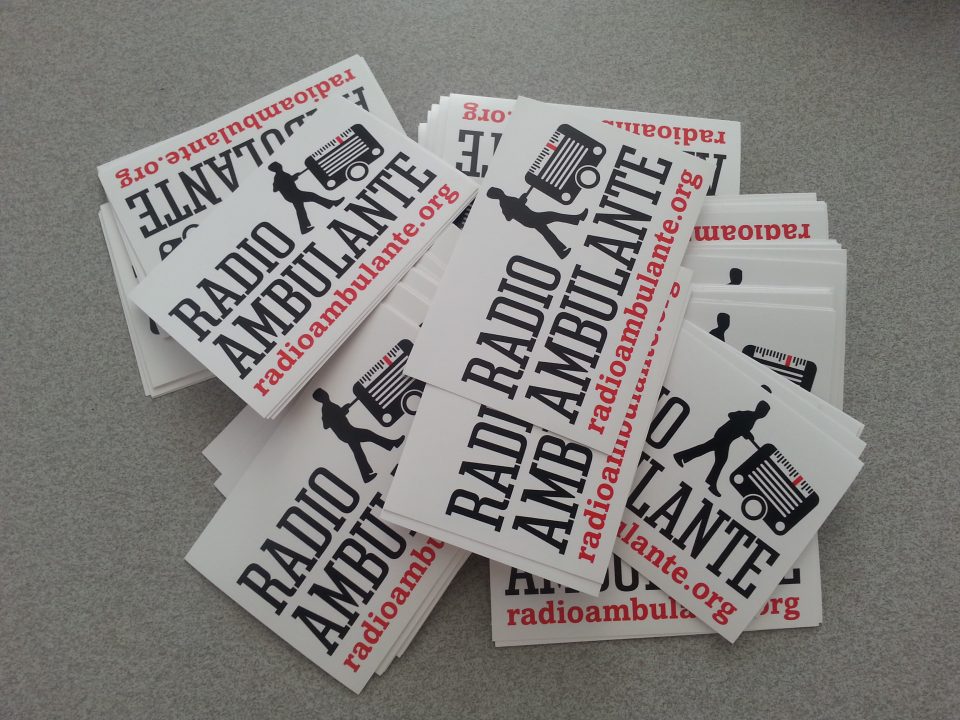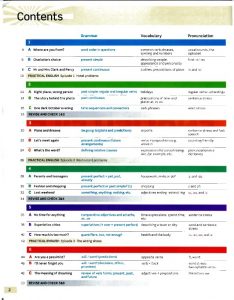 This coming Friday, November 20th, at the 2015 ACTFL Annual Convention (and Expo!) I will be giving a presentation about the Radio Ambulante in the Classroom Project (#RAintheClassroom).
This coming Friday, November 20th, at the 2015 ACTFL Annual Convention (and Expo!) I will be giving a presentation about the Radio Ambulante in the Classroom Project (#RAintheClassroom).
ACTFL is a huge, busy, crowded convention and quite frankly, it can be a little bit overwhelming. If you are coming to ACTFL for the first time, rest up now…it’s a lot to take on and I strongly recommend planning your schedule in advance (why yes! there’s an Android app and an iPhone app for that).
In the spirit of planning ahead, let me give a bit of a glimpse of what I will be talking about on Friday, and why you might want to attend.
If you teach 2nd or 3rd year Spanish, and you use a trade textbook, then then this Table of Contents should look quite familiar to you. Textbook authors have an impossible task: find chapter topics or scenarios, contexts, themes or cultural references that are relevant to a wide sample of students, make them politically and culturally “safe” (read: blah) and can also be a gateway to all of the grammar and vocabulary required for a student to study at an “intermediate” level of Spanish.
Teachers as well have an impossible task after adopting these texts. They often have sticker shock once they realize how much these materials cost and feel compelled to use them if only to justify the expense. And then they realize they have to figure out a way to make the topic of “Belleza and Estética” somehow compelling to 18-22 year olds AND teach them indirect object pronouns while at the same time not slipping into generalizations or stereotypes. “I give you the hairbrush… I give it to you…Will you pass it to me?” etc etc
Table of Contents in books such as these try to accomplish everything and nothing at the same time. In their effort to be inclusive, they try to talk about Latin America as if it were one monolithic culture. Certain tropes and stereotypes still permeate the reading texts and the ancillary activities. Their well-intentioned efforts to connect our students with the real world fall terribly short, leaving the hard work of making connections and relevance in the hands of the teacher.
Please know: I am not here to bash textbook companies. But as I have written before, they are problemmatic for numerous reasons. I continue to be worried about the image our texts portray of Hispanics and the hard work we need to help our students understand the diversity, the complexity, the “Latin America can’t be distilled into a two paragraph cultural listening comprehension activity” that many of our textbooks ignore.
In my presentation at ACTFL on Friday, I will share how Radio Ambulante’s stories can be used with intermediate level Spanish textbooks as a way to provide not only authentic language, but also stories of real people dealing with real issues…the issues our texts tend to shy away from for fear of being too controversial.
RA’s stories and not just reports, these aren’t passive listening comprehension exercises (which is also something our textbooks perpetuate and are, as I have argued before, problematic)… there is a creative arc in each of the crónicas that draws listeners in and requires a response. For that reason and many others…they are a perfect antidote complement to language textbooks.
Other takeaways from this presentation will be:
- examples of effective scaffolding activities when using RA in the classroom
- examples of stories and brainstorming activities about how they could be used in the classroom
- information on upcoming #RAintheclassroom initiatives involving language teachers and students (and how you could get involved!)
- reading lists on teaching listening, using podcasts in the language classroom, etc
- really cool stickers 🙂

I hope to see you @ACTFL on Friday Nov 20, from 2:30-3:30, in Room 8 of the San Diego Convention Center!


